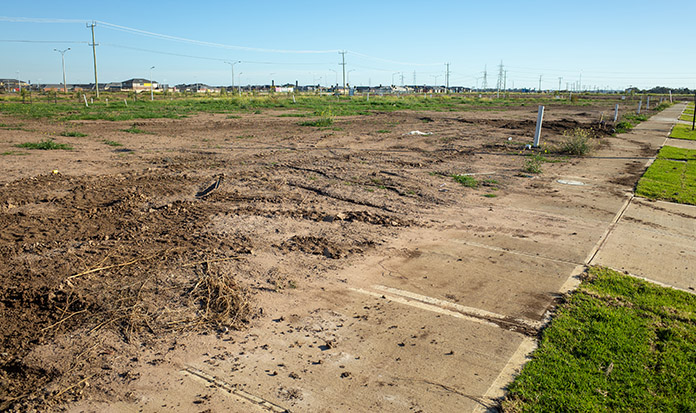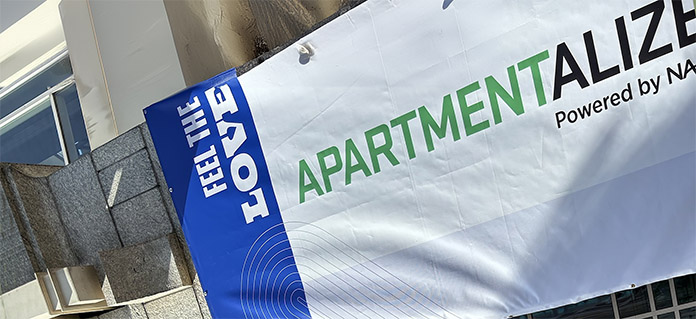The Philadelphia-based developer has one project underway and several more deep in the planning stages, ranging from new construction high-rises in Downtown Newark, N.J., to a $180 million transit-oriented, mixed-use development in the inner-ring Philadelphia suburb of Ardmore.
A year after delivering two successful urban projects, one rental and one for-sale, the company broke ground last June on an urban mix of apartments and 18,000 sq. ft. of ground-floor retail that will become Philadelphia’s first LEED-registered residential mixed-use building when it opens along the Avenue of the Arts in the first quarter of 2010.
Founder and CEO Carl Dranoff formed the eponymous company ten years ago with a focus on historic renovations and the use of investment tax credits and moved on to ground-up urban renewal projects. He says his formula for success is to be first into an undiscovered area, creating an exciting and large mixed-use destination where people will come to play, shop, dine and live, ultimately attracting other developers who will drive up the value of your property. The company takes a vested interest in all its properties, working to improve the surrounding neighborhood, often clustering several more assets in the same area. Dranoff, for instance, has completed four projects in the City of Brotherly Love and one on the Camden waterfront.
The developer, a regional winner in 2008 of an Ernst & Young Entrepreneur of the Year Award, credits his recent accomplishments to an ability to stay ahead of the curve, for example, switching from rental to for-sale and, while other developers were still planning condos in 2006, back to rental.
His company navigated those transitions by sticking closely to its core development competencies — getting entitlements, securing the financing, designing imaginative projects and then building and bringing them in on budget and on schedule — and not expanding beyond its means by taking on a lot of pre-development expenses in far-flung areas, as developers tend to do in boom times.
“I’ve been guilty of that in the past and have the grey hair to prove it, but I learned my lessons from past companies and decades. This time around, we stayed lean and mean, even through the good times,” said the civil engineer and Harvard MBA, who began his development career at Philadelphia-based Historic Landmarks for Living, where he designed, developed and completed the adaptive reuse of 66 historic properties in 12 states, before joining the Rubin Organization, now PREIT, a New York Stock Exchange–listed REIT.
Dranoff also had the foresight to begin refinancing his portfolio about three years ago, and today is in the enviable position of having long-term financing on all his company’s properties, with nothing coming due for years.
Market timing
About five years ago, soon after completing some major historic renovation projects that included multifamily rental housing in the Philadelphia region, Dranoff was looking for his next project. He saw the winds begin to shift in 2003, when easy financing terms and interest rates in the four-percent range were luring even more people into home-ownership, and he shifted his company’s energy toward condos.
“I was concerned that we were beginning to lose our tenant base and realized that to be competitive, we were going to have to be two-shouldered, offering rentals, as well as places to buy,” he said. “That way we would hold onto our customers and attract new ones.”
So, when he won the right in October 2003 to purchase and develop the 0.8-acre (30,000 sq. ft.) site at Philadelphia’s Broad and Pine Streets, Dranoff decided to build what would become the first ever ground-up Philadelphia condo project to be completed under the control and management of the original developer, and the first ever to open on the “Avenue of the Arts,” the new name for Broad Street.
Within 15 months of closing on the land, Dranoff lined up a $115-million construction loan from US Bank and a consortium consisting of Citizens Bank, PNC Bank and Compass Bank and broke ground on Symphony House, which also benefits from a city-wide, 10-year tax abatement on new construction and a $4.5 million state redevelopment grant, in return for building a performing arts center there.
The 32-story tower is a finalist in both the Best High-Rise Condominium Community and Best Mixed-Use Community categories for the National Association of Home Builders 2009 Pillars of the Industry Awards. Winners will be announced on March 17.
The $125 million tower just south of City Hall, which includes 163 luxury condos, the Suzanne Roberts Theatre — a new full-scale Broadway-style venue for the Philadelphia Theatre Company — and a public parking garage and two restaurants, also brought housing, the missing ingredient, to the Avenue of the Arts that already boasted numerous theaters, The Kimmel Center, shopping and dining locales and a flourishing nightlife.
Designed by locally-based Bower Lewis Thrower (BLT) Architects in an art deco-inspired style that recalls the lifestyle of the wealthy in the 1920s and 1930s, the project was 80 percent sold when it opened in June 2007. No matter that the condo market was in a sorry state at the time. Dranoff began pre-sales in 2005, and many of the units were purchased sight-unseen.
“We were early in the game with that project and it was an enormous success. Even in a softening market, most of the buyers closed. We were able to build it, sell it and pay off all our loans on the property. We still have some units left to sell, but we have only profits sitting there,” said Dranoff.
Wanting to extend the Avenue of the Arts district further down the street by building a lower-cost version of Symphony House, Dranoff cobbled together a number of city-owned parking lots and some ramshackle houses into a two-acre site.
What would ultimately become 777 South Broad was first conceived as a luxury condo mid-rise, which costs less to build and less for site assemblage than a high-rise, and Dranoff planned to bring it in for 20 percent of the sale price per square foot of Symphony House.
But after noticing another sea change in the multifamily market in 2006, he flipped the project to rental, designed it differently and proceeded. Tweaks to the design were minor, such as eliminating the underground garage that would have enabled the project to include 250 parking spaces, which made sense for a condo, but not for rental, and chopping the building down to five stories from seven. Dranoff also aimed for a Leadership in Energy and Environmental Design (LEED) certification from the U.S. Green Building Council (USGBC).
Green a trend, not a fad
777 South Broad is Dranoff’s first foray into environmentally sensitive development, but it’s a path the company likely will follow on with future projects. Dranoff began to hear about green buildings back in 2007, before gas hit $4 a gallon, and believed it was a trend that was going to stick and reap benefits for builders, developers and residents.
Designed by JKR Partners of Philadelphia, the environmentally friendly project that will use some locally produced materials and recycled products also features a reflective roof surface designed to minimize air-conditioning dependence and the production of pollutants, and the use of low VOC carpets, paints and coatings and water saving fixtures. Air quality is a crucial element of LEED certification, which requires all floors have 30 percent fresh air flow, said Dranoff.
The new-construction, loft-style design with 10-ft. ceilings and expansive, operable windows will receive abundant daylight, while also maximizing the visual comfort of each space. Shielded site lighting also will reduce light pollution.
Amenities at 777 South Broad include a luxurious lobby with 24/7 concierge desk, board room and library club room, state-of-the-art fitness center, an elaborate skydeck on the roof, secure gated parking and storage for every unit on each floor. Ground-floor retail with outdoor cafe seating will help to redefine the area as a destination locale, while the mass transit lines with bus and subway stops, will encourage car-free transportation.
Going green added about four percent to the project development costs, but Dranoff is confident the investment will pay off. “I don’t know that people will pay extra to be green, but I do know if it’s the same cost, people would rather be in a green building,” he said. When the project opens in the first quarter of 2010, he expects the apartments that average 1,000 sq. ft. will rent for $2.50 per sq. ft.
But by far, the biggest impact of the switch to apartments from for-sale development was in project financing, because financing a rental is far different from financing a condo. “And, as it turned out, our crystal ball was pretty good because by 2008 the gushing wells of construction financing were reduced to a thin trickle,” said Dranoff.
The company was able to take down a $56 million construction loan from Citizens Bank on the strength of its previous development successes. Dranoff invested $10 million of his own capital in the project that also received a $4 million grant through the state’s Redevelopment Assistance Capital Program, given to projects that stimulate new neighborhoods and create employment.
Dranoff points out that the ability to secure public subsidies, as well as private financing, is another of his company’s core competencies, and it’s the financing that makes these projects feasible. “The key to successful financing is relationships, and we have relationships with lenders that transcend decades. They know we are nimble, with a diversified cash-flowing portfolio while keeping our options to build rental versus for-sale open,” he said.















